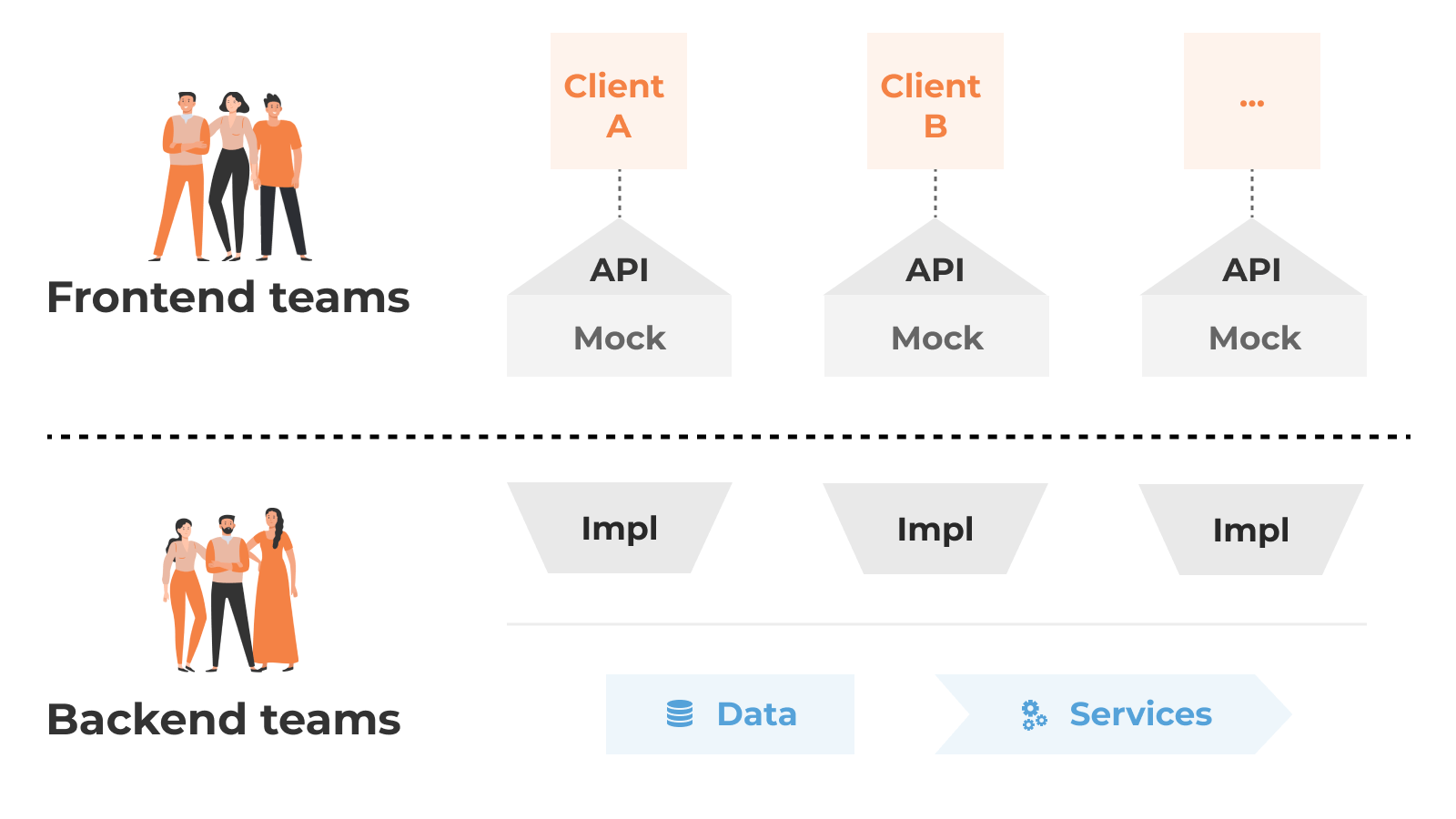
A Customer-First Experience sounds great, and really has a nice ring to it, but how do you design your application to be UX (User Experience) first? Now traditionally, web applications were tied to the features and roadmap of a single monolith solution. In order to change that, we need to not only shift that paradigm, but we needed to reverse roles; and for that, the concept of Decoupled Architecture was introduced.
Decoupled Architecture is a type of computing architecture that enables computing components or layers to execute independently while still interacting with each other through well-defined protocols.
So what’s unique about it? Well, in Decoupled Architecture, every component is an independent business unit that consists of its own logic and data and performs its tasks independently of the others. Most of the time, we use Decoupled Architecture for complex applications to allow layers and components to be completely sovereign from each other. This architecture enables developers to develop, test, and deploy application modules independently.
3 Design Principles for a Well-Architected Decoupled Solution

1. API-First in Decoupled Architecture: What is API First? It is on-demand, stateless services that your frontend application can call to retrieve content or perform a specific transaction. The API is designed to meet the expectation of the customer through the user interface design. However, with legacy solutions, these same APIs were designed based upon a journey. For example, Perform Step 1 before 2 and Step 2 before 3 etc. What if you wanted to start at step 3? That would not have been possible before. But with API first, the services are broken down into modules facilitating the ability to adjust and decouple itself from the service journey to animate the user experience.
2. BFF in Decoupled Architecture: Nope, not Best Friends Forever; BFF means Backend For Frontend in this context. Imagine this is your computer and orchestration service layer for your web application. From time to market perspective, this allows the frontend team to develop the user experience in parallel with the backend team who become the underwriters with the service contract owner being the user. Consequently, that outcome becomes reusable and trustworthy because it’s consistent regardless of which form or mutation it undertakes. Allow your frontend application to focus on enriching your user experience and decouple itself from the management of the complex business rules.
3. SaaS in Decoupled Architecture: Decoupled Architecture also allows the Software-as-a-Service (SaaS) strategy. In this scenario, we move everything to the cloud, so the data is accessible from anywhere. Even some of the companies move their data and services to different geographical locations. So they are available from a nearby data center to achieve efficiency. This pattern aims to provide scalability, availability, and concurrency of data and services.
Decoupled Architecture and its Benefits

Below are a few of the developmental advantages an organization or a UI UX design company can achieve by following decoupled architecture as a core development principle:
- Independent UI component framework
- Decoupled architecture is one of the best solutions to build diverse experiences
- Independent Deployments: Deployments are faster and smaller
- Deploy faster with segmentation without risking functionality
- Scale your web applications and improve your maintainability
- Improve online rendering performance
- Reduce negative experiences with fail and hide independent handling
Decoupled Architecture and its Challenges
Before deciding if Decoupled Architecture is right for your organization, consider the following that could pose some challenges:
- Performance is a challenge and usually, overall response deteriorates. In the case of distributed components and layers, latency increases as compared to in-memory architecture.
- It needs an extensive thought process to design a network layer: Since everything is now in independent modules, components, or layers, so you must careful while handling communication requests between each element. In such scenarios, developers have to write extra code in the network layers to avoid barriers.
- Redundant code in decoupling can result in code duplication in different modules.
- Testing is very complex in a decoupled environment.

No one could argue of the shift we are seeing towards Customer-First Experiences; however, achieving them is easier said than done. Fortunately, with Decoupled Architecture, you can make your code more manageable, scalable, and consistent, all while curtailing the total cost of ownership to get your product to your user faster and with confidence.



